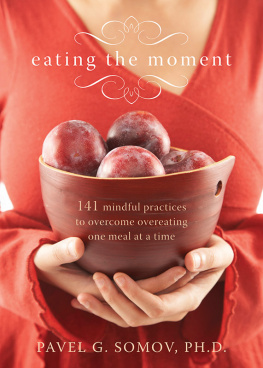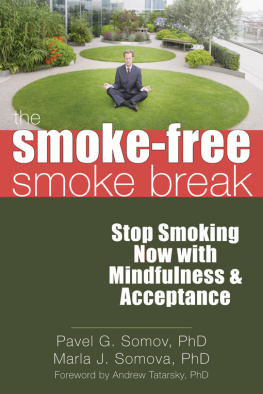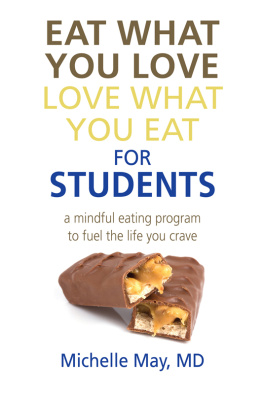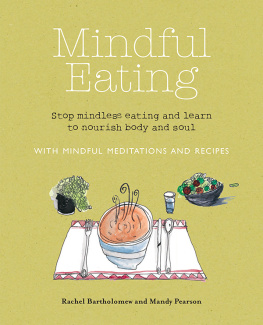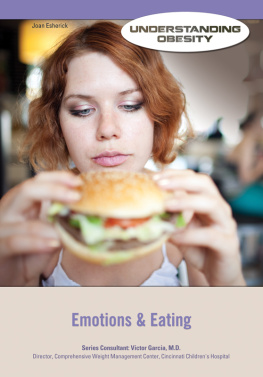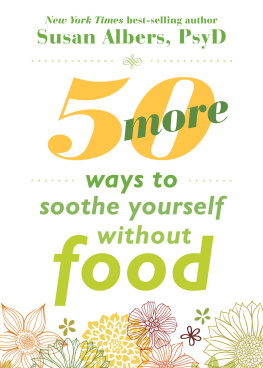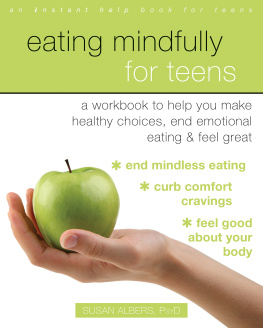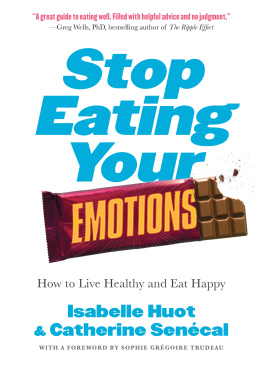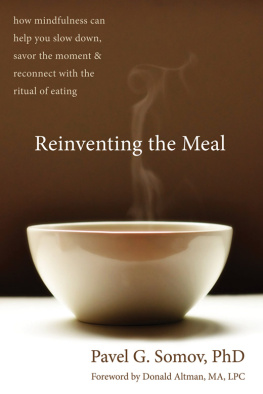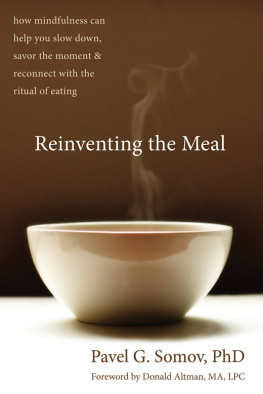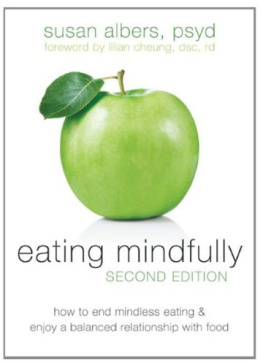Acknowledgments
Just as the sun keeps on rising, books keep on being written and published. And so has this one, but not without help. I owe much gratitude to acquisitions editor Melissa Kirk, both for the discerning art of obtaining and for seemingly bottomless patience in chaperoning a novice author through the fjords of publishing. I owe gratitude to copy editor Brady Kahn for untiring tact and for oh-so-validating willingness to explore the original meaning of the authors choice of words. I owe gratitude to art director Amy Shoup for so precisely illustrating the satisfying intimacy of mindfulness with the cover picture that is, indeed, worth a thousand words. On a personal side of this publishing matter, I owe gratitude to all who have nurtured my nature and to the countless rascal sages that I have encountered in life who have taught me lessons I did not seek to learn butin retrospectcould not have afforded to go without. Thank you, all!

Pavel G. Somov. Ph. D., is a clinical psychologist in private practice in Pittsburgh, PA. The mindful-eating program presented in this book uses techniques and tools he developed for his clients. He has successfully used similar mindfulness-based interventions with substance abusers in recovery. Somov emigrated from Russia at the age of twenty-one and became a US citizen in 1996. He received his Ph. D. in counseling psychology from the State University of New York at Buffalo in 2000.

Chapter 1
But Everyone Else Was Eating!
Becoming Mindful of Environmental Triggers of Eating
To review, people eat for three reasons: to satisfy the needs of the body, to satisfy the needs of the mind, and out of habit. But whats a habit? Any habit can be understood as a stimulus-response relationship in which a stimulus is an element of the environment that triggers us to respond in a previously conditioned, mindless manner. For example, since movie theaters traditionally sell popcorn and soda, we associate going to the movies (stimulus) with eating popcorn and nursing a giant soda (response). When we eat out of habit in response to an external trigger, our eating is initiated upon the demand of the environment. The environment demands that we eat now. And we mindlessly oblige. When we let the environment decide when we should eat, we are, in a sense, surrendering the sovereignty of our conscious choice over eating as well as our common sense. It takes the mindlessness of habit to justify paying six or seven bucks for a cup of ice cubes and a handful of popped corn kernels when we arent even hungry!
Eating Out of Habit Means Overeating
I owe it to you to make the following point painfully clear: Unless you are eating to satisfy the needs of your body, you are overeating. In other words, if you are eating out of habit, not out of hunger, you are eating more than you need. Wasnt so bad, was it? On to the next truism.
Environmental Triggers Initiate and Maintain Overeating
Say a friend invites you out to eat. You arent actually hungry but decide to go along. Once at the restaurant, the sights and smells provoke an intense appetite. I am famished! you proclaim, unaware of the hidden evolution of a want into a need. The dinner is over and you feel full, but your friend isnt finished. She wants to look at the dessert menu. Minutes later, seduced by the pictures of decadent desserts, your appetite is kick-started and youre plowing through a monster slice of Death-by-Chocolate. What happened? You saw something appetizing and developed a desire for it, a craving so strong that it had the conviction of hunger. Sound familiar? The point is that the environment (a combination of people, places, and foods) can both trigger us to eat when we are not hungry (initial overeating) and maintain our eating past the point of fullness (continued overeating).
Why Did You Eat Just Now?

We eat to satisfy the needs of the body, to satisfy the needs of the mind, and out of habit when triggered by environmental cues. In the week to come, explore your motives behind each eating episode. After you eat, ask yourself, why did I just eat? Was I actually hungry, or was I just triggered to eat by something in the environment? Did I eat to cope, to address my emotional needs? Keep track of the reasons behind your eating episodes. Write them down in a notebook. For example, if you ate out of hunger, note that your eating was need based. If you ate to deal with stress, note that you ate to cope. If you ate on a craving, after being triggered by an environmental cue, note that your eating was environmentally triggered. If several different reasons coincide, try to determine the primary motive for eating.
Share and track your insights with the Mindful Eating Tracker.
Why Are You About to Eat Right Now?

Before you eat, ask yourself the following questions: Why am I about to eat? Am I actually hungry, or am I about to eat because Ive been triggered by something in my environment? Am I about to eat as a way of coping? After you clarify to yourself why you are about to eat, do the following: Eat. Or dont eat. Recognize that right now you have an opportunity to make a conscious choice. At this point, thats enough. Continue with this exercise for a week or for as long as it appears valuable to you.
Hunger vs. Craving: Whats the Difference?
A craving is a pseudo-hunger signal that mimics hunger. Cravings prompt us to eat as if we were hungry when we actually arent. Hunger is a physiological need with a physiological signature, a state of body. Craving is a want, a psychological state, essentially a thought of desire, a motion of the mind. Hunger is generic: you need food, any food thatll make hunger go away. Cravings are specific: you want a particular food. Tribole and Resch (1996) have aptly called cravings taste hunger (88). Hunger depends on your physiology. Cravings depend on the situational context. For example, if you werent hungry but, after passing a fast-food place, suddenly developed a desire to eat, the chances are that this was a craving and not a state of hunger. Your body probably didnt change in the time that it took for you to drive past a fast-food billboard, but your mind easily could have. The exercises below will help you practice how to distinguish between hunger and cravings.
Hunger Essay

Write an essay about true hunger. Its possible that you havent had the experience of true hunger for quite some time, if ever. If so, youll need to do some research by letting yourself have this experience. Dont worry; once you feel true hunger, you can relieve it by eating. After consulting your physician about whether its safe for you to delay a meal to experience a state of hunger, plan a day (preferably a day off) when youll allow yourself to abstain from eating until you get hungry. Push the envelope a bit: allow yourself to get hungrier than you have in a long time. Once youre at a point of rather intense hunger, first describe the experience in an essay, and only then,eat. Note the physiological signature of this moment of hunger (if any), reminisce about the last time you felt this hungry, and meditate on what this moment of hunger brings to your mind (emotionally, philosophically, spiritually).

